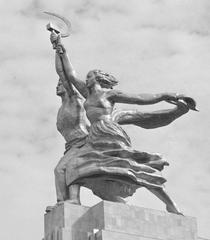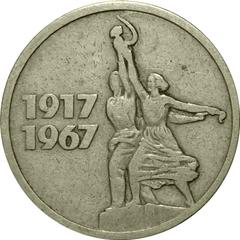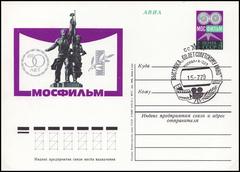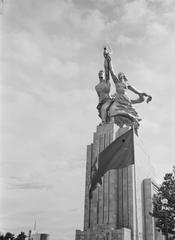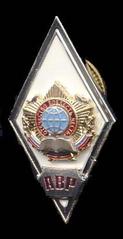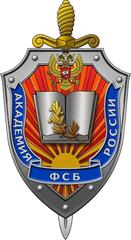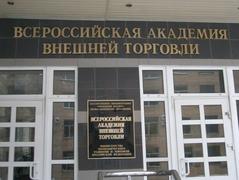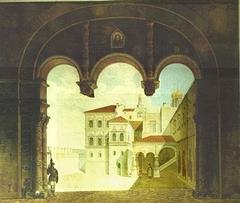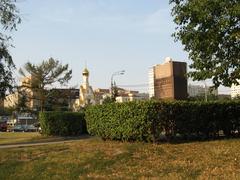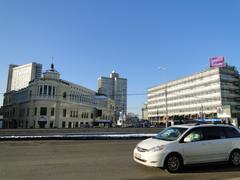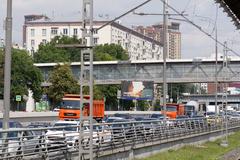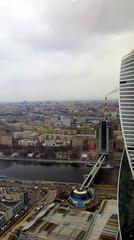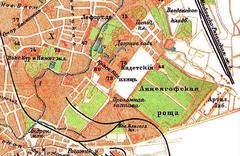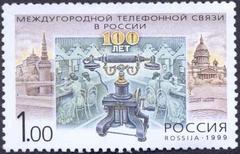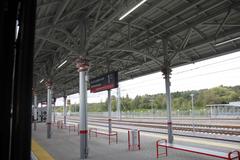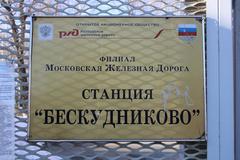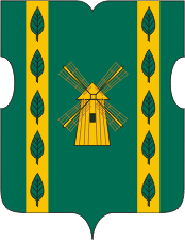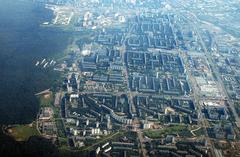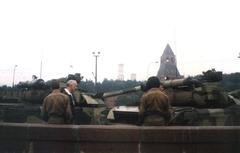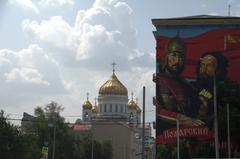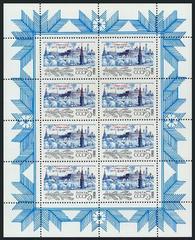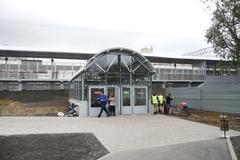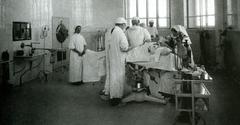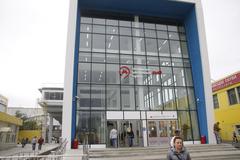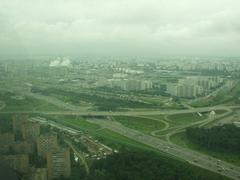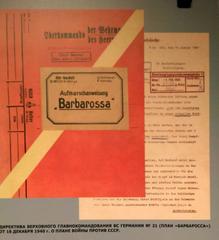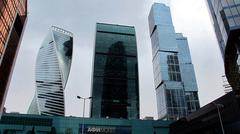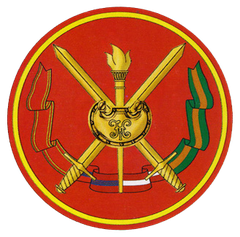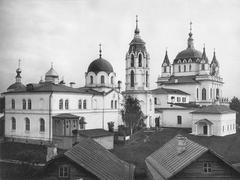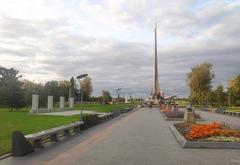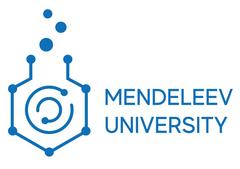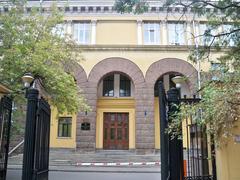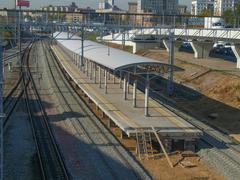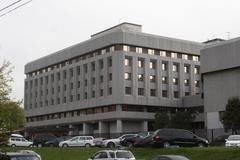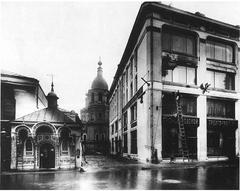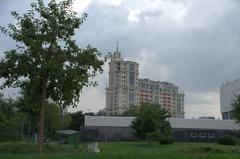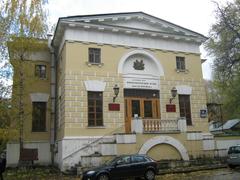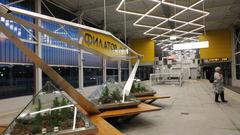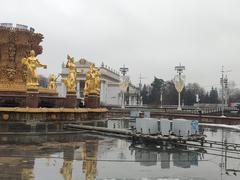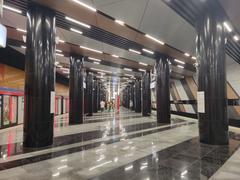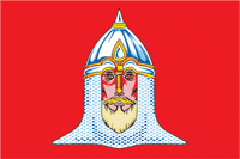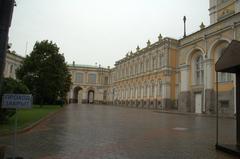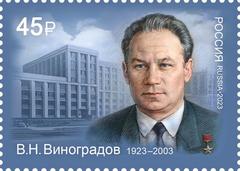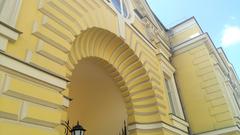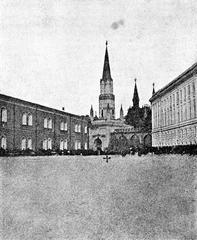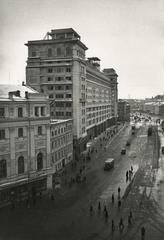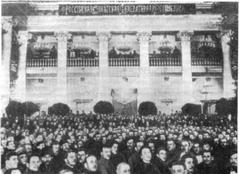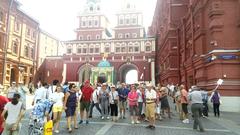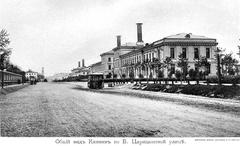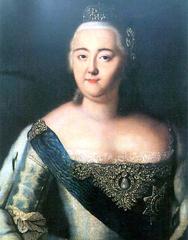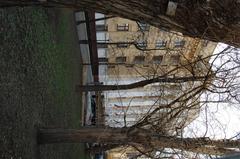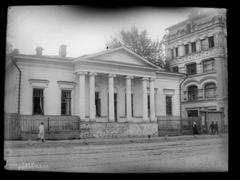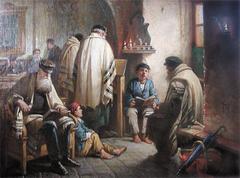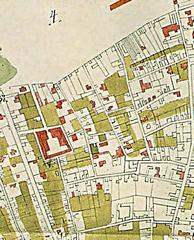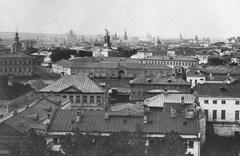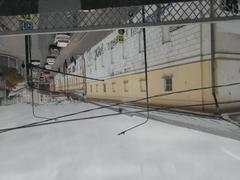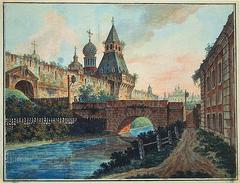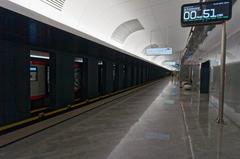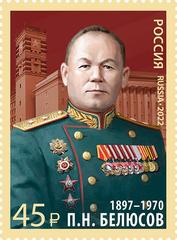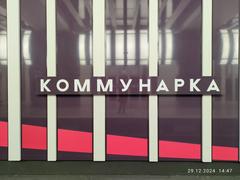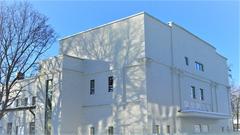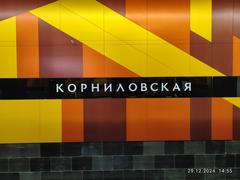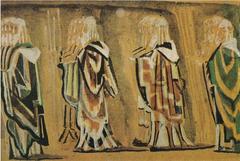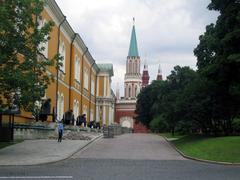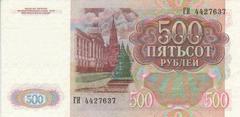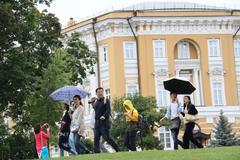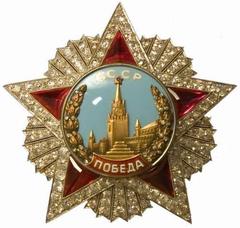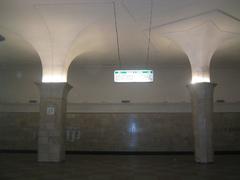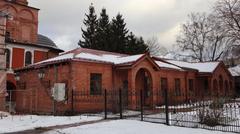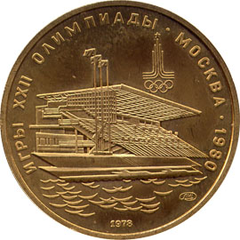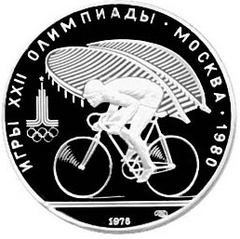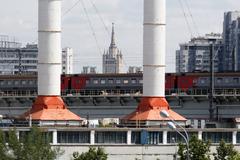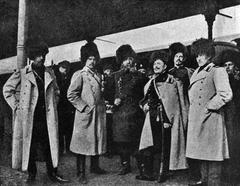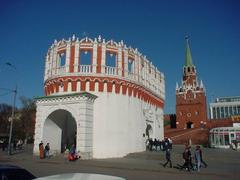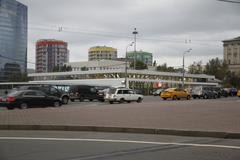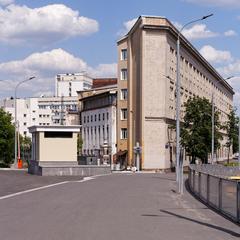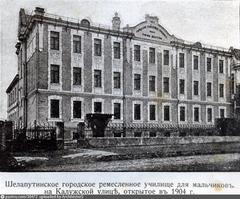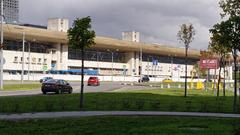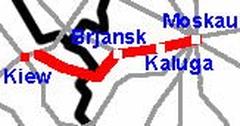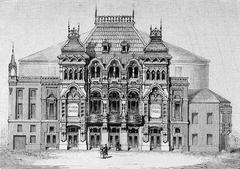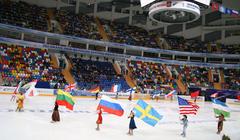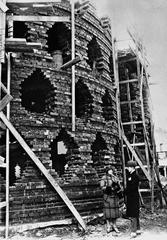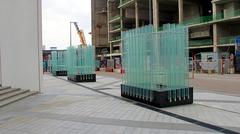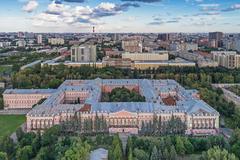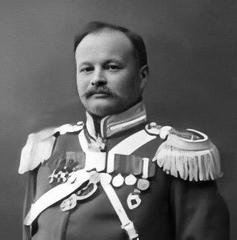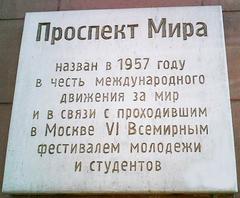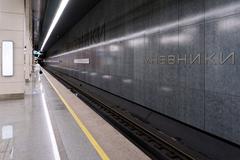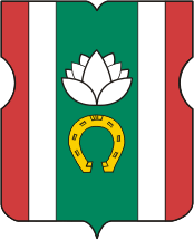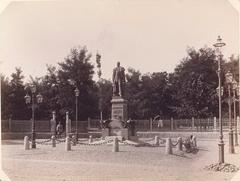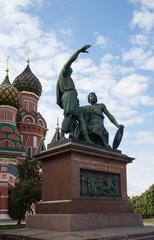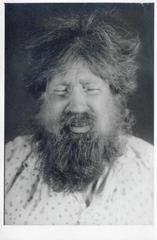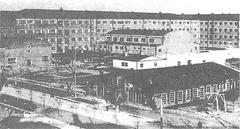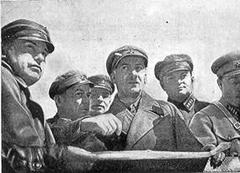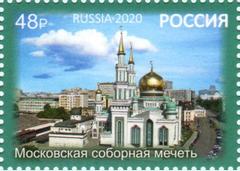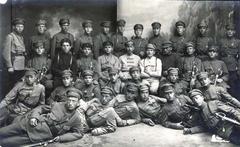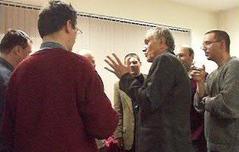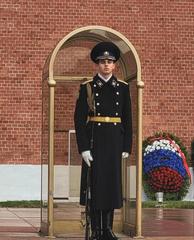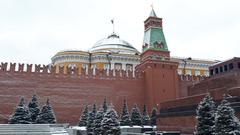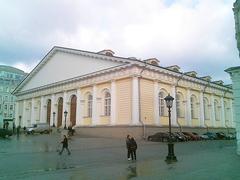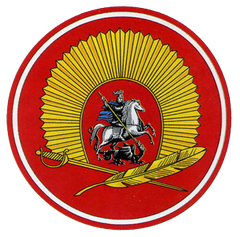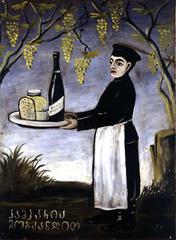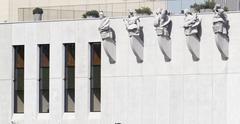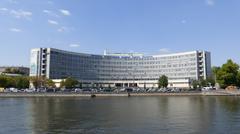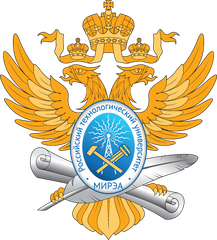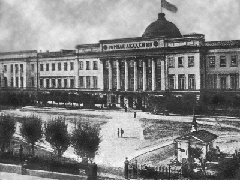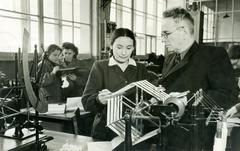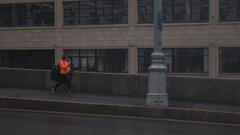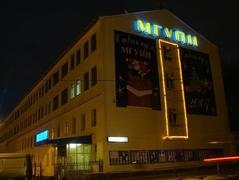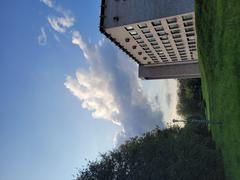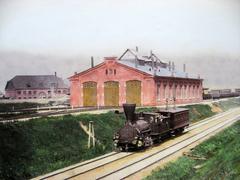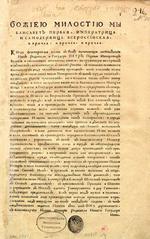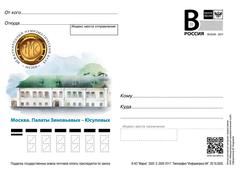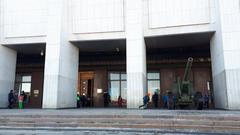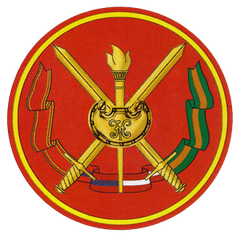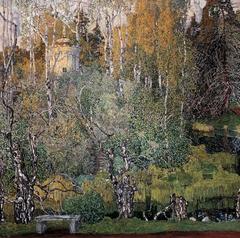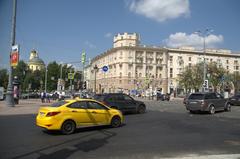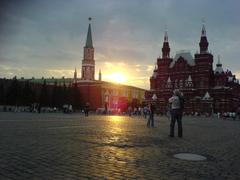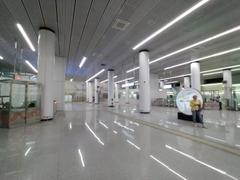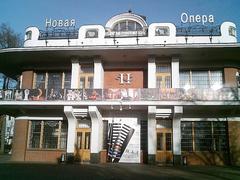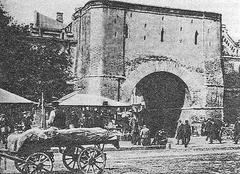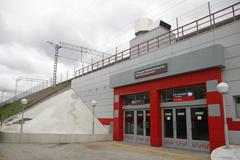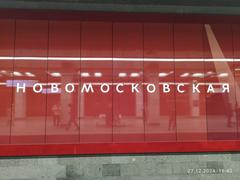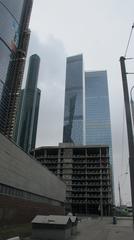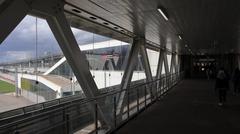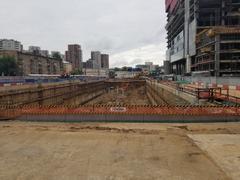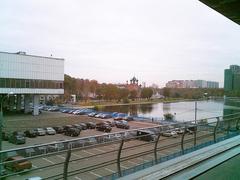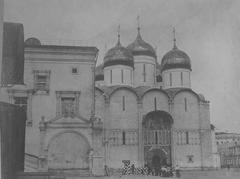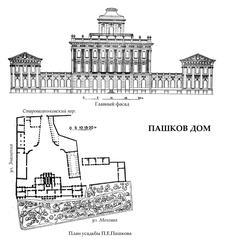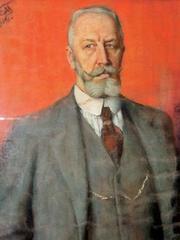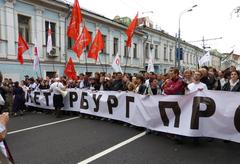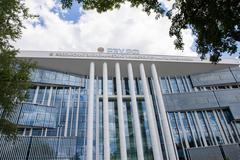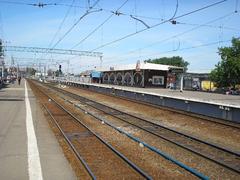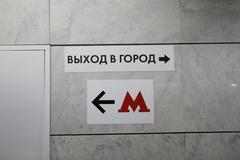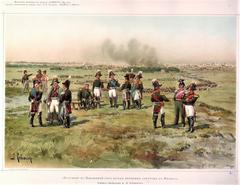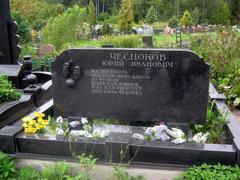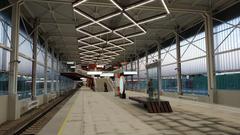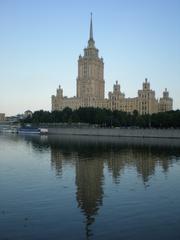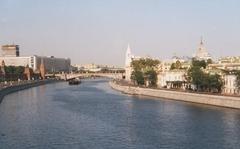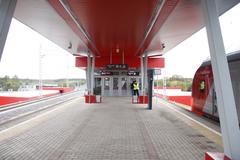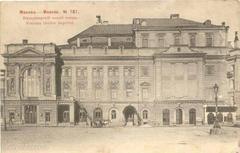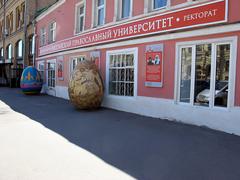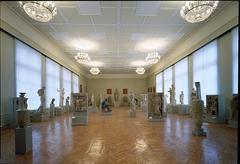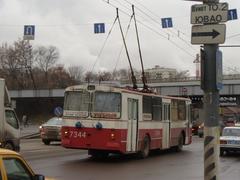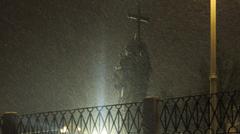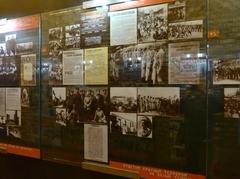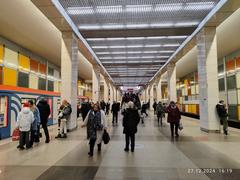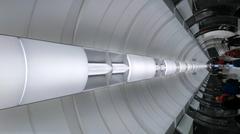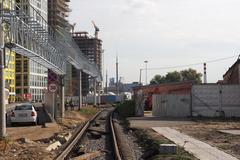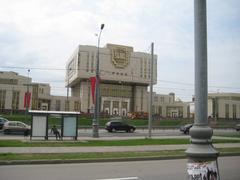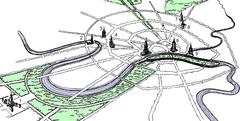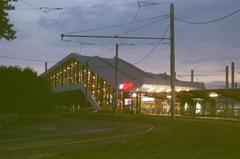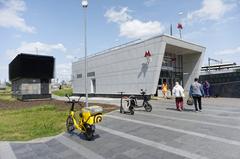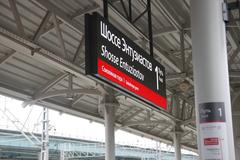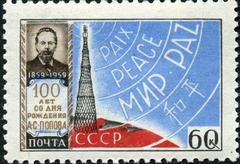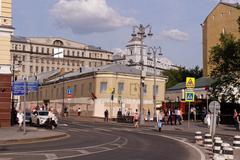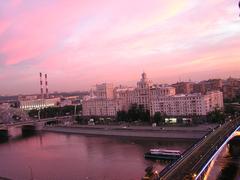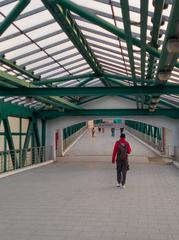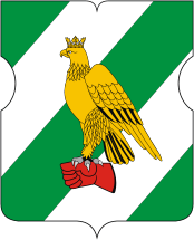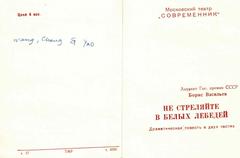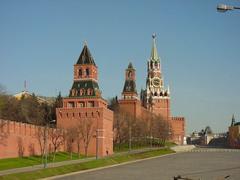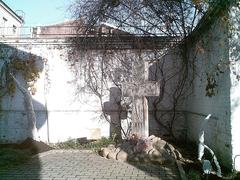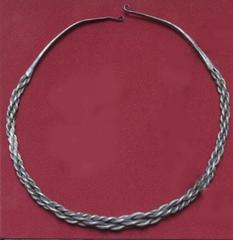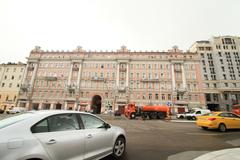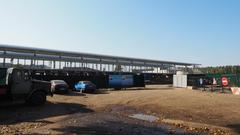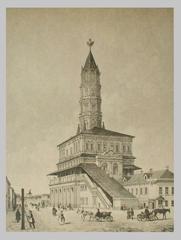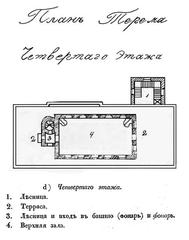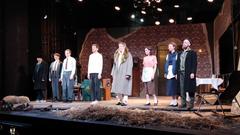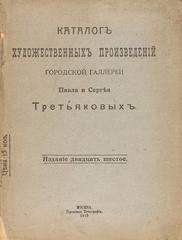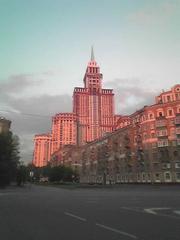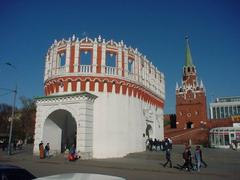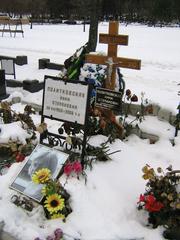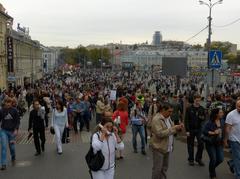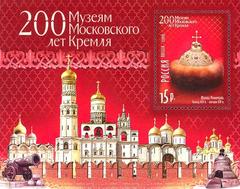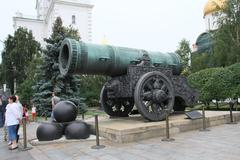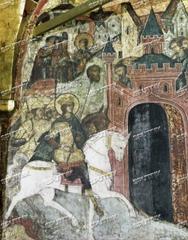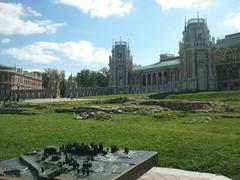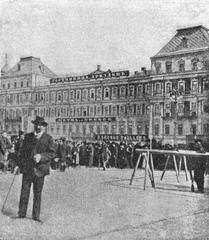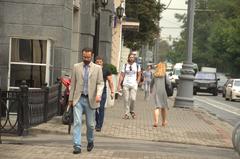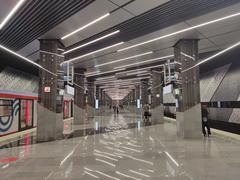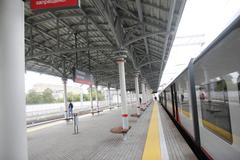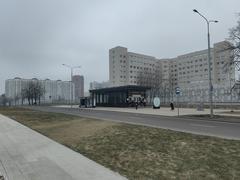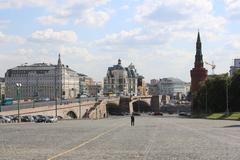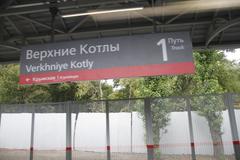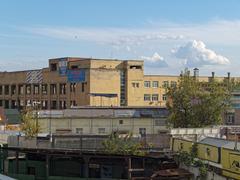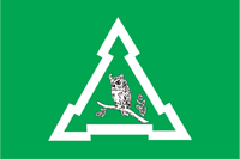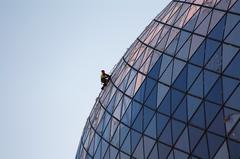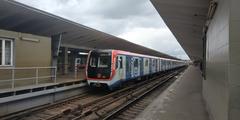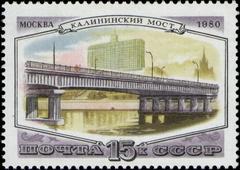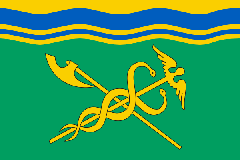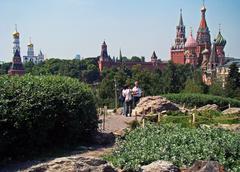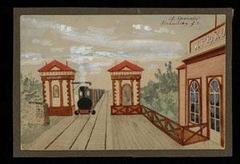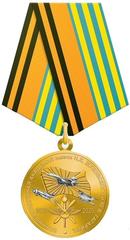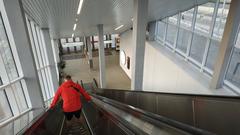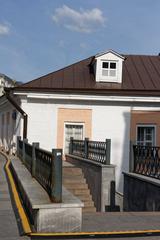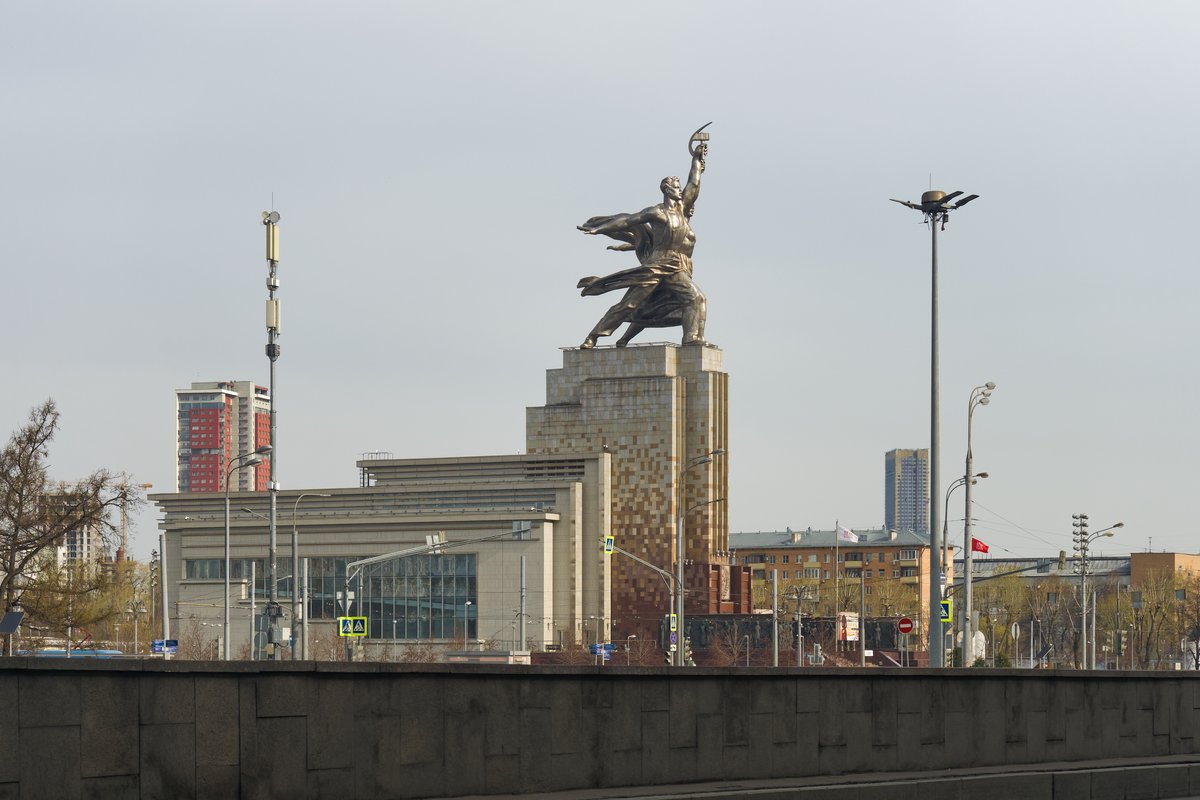
Visitor’s Guide to the Worker and Kolkhoz Woman Monument
Date: 18/07/2024
Introduction
The Worker and Kolkhoz Woman Monument is one of the most iconic symbols of Soviet art and ideology. Designed by the eminent sculptor Vera Mukhina for the 1937 World’s Fair in Paris, the monument encapsulates the spirit of socialist realism, a style that sought to glorify the industrious and collective spirit of the Soviet people. The sculpture, featuring a male worker and a female collective farm worker raising a hammer and sickle, was created amidst a backdrop of intense ideological competition between the Soviet Union and Nazi Germany. Its placement at the Soviet pavilion, directly facing the German pavilion, provided a stark visual representation of the ideological clash of the time (source) (source) (source).
Initially celebrated as a potent symbol of Soviet progress and unity, the monument’s significance has evolved over time. While it remains a beloved landmark, it also serves as a reminder of the complexities and contradictions of the Soviet era. From its grand debut in Paris to its relocation and restoration in Moscow, the Worker and Kolkhoz Woman has maintained its status as a powerful emblem of Soviet ambition and artistic achievement.
Table of Contents
- History, Visiting Hours, and Tickets](#history-visiting-hours-and-ticketsexploring-the-worker-and-kolkhoz-woman-history-visiting-hours-and-tickets)
- [History and Construction](#history-and-constructionhistory-and-construction)
- [The 1937 World’s Fair and Socialist Realism](#the-1937-worlds-fair-and-socialist-realismthe-1937-worlds-fair-and-socialist-realism)
- [Construction and Reception](#construction-and-receptionconstruction-and-reception)
- [Return to Moscow and Changing Interpretations](#return-to-moscow-and-changing-interpretationsreturn-to-moscow-and-changing-interpretations)
- [Restoration and Relocation](#restoration-and-relocationrestoration-and-relocation)
- [Visitor Information](#visitor-informationvisitor-information)
- [Visiting Hours and Tickets](#visiting-hours-and-ticketsvisiting-hours-and-tickets)
- [Accessibility](#accessibilityaccessibility)
- [Travel Tips and Nearby Attractions](#travel-tips-and-nearby-attractionstravel-tips-and-nearby-attractions)
- [Special Events and Guided Tours](#special-events-and-guided-toursspecial-events-and-guided-tours)
- [Photographic Spots](#photographic-spotsphotographic-spots)
- [History and Construction](#history-and-constructionhistory-and-construction)
- Hours, Tickets, and Nearby Attractions in Moscow](#hours-tickets-and-nearby-attractions-in-moscowvisiting-the-worker-and-kolkhoz-woman-pavilion-hours-tickets-and-nearby-attractions-in-moscow)
- [Planning Your Visit](#planning-your-visitplanning-your-visit)
- [Getting There](#getting-theregetting-there)
- [Opening Hours and Tickets](#opening-hours-and-ticketsopening-hours-and-tickets)
- [Best Time to Visit](#best-time-to-visitbest-time-to-visit)
- [Exploring the Surroundings](#exploring-the-surroundingsexploring-the-surroundings)
- [VDNKh Museum](#vdnkh-museumvdnkh-museum)
- [Cosmonautics Museum](#cosmonautics-museumcosmonautics-museum)
- [Ostankino Tower](#ostankino-towerostankino-tower)
- [Botanical Garden of the Academy of Sciences](#botanical-garden-of-the-academy-of-sciencesbotanical-garden-of-the-academy-of-sciences)
- [All-Russia Exhibition Centre (VVTs)](#all-russia-exhibition-centre-vvtsall-russia-exhibition-centre-vvts)
- [Dining and Shopping](#dining-and-shoppingdining-and-shopping)
- [Accommodation](#accommodationaccommodation)
- [Special Events and Guided Tours](#special-events-and-guided-toursspecial-events-and-guided-tours)
- [Photographic Spots](#photographic-spotsphotographic-spots)
- [Accessibility](#accessibilityaccessibility)
- [FAQ](#faqfaq)
- [Planning Your Visit](#planning-your-visitplanning-your-visit)
Exploring the Worker and Kolkhoz Woman - History, Visiting Hours, and Tickets
The Worker and Kolkhoz Woman statue is a powerful symbol of Soviet art and propaganda, embodying the ideals of socialist realism. Its creation and journey through history offer a fascinating glimpse into a pivotal period in Russian history.
History and Construction
The 1937 World’s Fair and Socialist Realism
The statue was designed by Vera Mukhina, a prominent Soviet sculptor, for the 1937 World’s Fair in Paris. This event, themed “Arts and Technology in Modern Life,” became a platform for international ideological competition between democratic and totalitarian regimes. The Soviet Union, eager to showcase its progress and the success of its socialist ideology, commissioned Mukhina to create a piece that would embody the spirit of the Soviet people.
Socialist realism, the officially sanctioned art style of the Soviet Union, dictated that art should depict the everyday lives of workers and peasants in a heroic and optimistic light. Mukhina’s design, featuring a muscular worker and a graceful collective farm girl (kolkhoz woman) striding confidently forward, perfectly captured this aesthetic. The figures, clad in work clothes, raise a hammer and sickle – symbols of industry and agriculture, respectively – forming a dynamic, upward-thrusting composition.
Construction and Reception
The monument, constructed from stainless steel over a wooden frame, stands at an impressive 24.5 meters (80 feet) tall. Its construction was a feat of engineering, particularly given the limited time frame. The individual sheets of steel were meticulously shaped and welded together, creating a seamless and powerful silhouette.
At the fair, the statue was placed atop the Soviet pavilion, directly facing the German pavilion, which featured a towering eagle and swastika, symbolizing Nazi Germany. This juxtaposition, intentional or not, created a powerful visual representation of the ideological struggle between the two nations.
The statue was met with critical acclaim at the World’s Fair, praised for its dynamism, optimism, and powerful symbolism. It won the Grand Prix, solidifying its status as a masterpiece of Soviet art.
Return to Moscow and Changing Interpretations
After the fair, the statue was disassembled and transported back to Moscow. In 1939, it was reassembled at a less prominent location near the entrance to the All-Union Agricultural Exhibition (VSKhV), now known as VDNKh.
Over the years, the statue’s meaning has been subject to evolving interpretations. Initially a potent symbol of Soviet unity and progress, it later became associated with the darker aspects of the Stalinist era. Despite this, it has retained its iconic status, becoming a beloved landmark and a nostalgic symbol of a bygone era for many Russians.
Restoration and Relocation
In the early 2000s, the statue underwent a major restoration project. It was meticulously cleaned, repaired, and its internal structure reinforced. The project culminated in 2009 with the statue’s relocation to a new, more prominent pedestal near the VDNKh, closer to its original location and once again facing west.
Today, the Worker and Kolkhoz Woman statue stands as a testament to the artistic and ideological currents of the 20th century. It serves as a reminder of the Soviet Union’s complex legacy, sparking conversations about art, history, and the power of symbolism.
Visitor Information
Visiting Hours and Tickets
The Worker and Kolkhoz Woman statue is accessible to visitors throughout the year. The visiting hours are generally from 10:00 AM to 7:00 PM, though it is advisable to check the official VDNKh website for any changes or special event closures. There is no entrance fee to view the statue, but guided tours may have associated costs.
Accessibility
The statue is located near VDNKh, which is accessible via public transportation. The nearest metro station is VDNKh on Line 6 of the Moscow Metro. The area is wheelchair accessible, and there are facilities for visitors with disabilities.
Travel Tips and Nearby Attractions
When visiting the Worker and Kolkhoz Woman statue, consider exploring the nearby attractions. VDNKh itself is a vast exhibition center with numerous pavilions, museums, and parks. The Cosmonautics Museum offers a fascinating insight into the history of space exploration.
Special Events and Guided Tours
Throughout the year, VDNKh hosts various cultural events, exhibitions, and fairs. Guided tours of the Worker and Kolkhoz Woman statue and surrounding areas are available and provide deeper insights into its history and significance.
Photographic Spots
The statue offers numerous opportunities for photography enthusiasts. The dynamic poses of the figures and the monument’s impressive height make for striking images, especially during sunrise or sunset when the lighting adds dramatic effects.
FAQ
Q - What are the visiting hours for the Worker and Kolkhoz Woman statue?
A - The statue is generally open to visitors from 10:00 AM to 7:00 PM. It’s best to check the official VDNKh website for any updates.
Q - Is there an entrance fee to visit the Worker and Kolkhoz Woman statue?
A - There is no entrance fee to view the statue. However, guided tours may have associated costs.
Q - How can I get to the Worker and Kolkhoz Woman statue?
A - The statue is located near the VDNKh exhibition center in Moscow. The nearest metro station is VDNKh on Line 6 of the Moscow Metro.
Q - Are there facilities for visitors with disabilities?
A - Yes, the area is wheelchair accessible, and there are facilities for visitors with disabilities.
Stay Up to Date
Keep up with the latest updates and events related to the Worker and Kolkhoz Woman statue by visiting the official VDNKh website. Follow related social media channels for more information and updates on upcoming events and exhibitions.
Plan your visit to this iconic monument and immerse yourself in a piece of Soviet history that continues to inspire and provoke thought.
Visiting the Worker and Kolkhoz Woman Pavilion - Hours, Tickets, and Nearby Attractions in Moscow
Planning Your Visit
Getting There
- Metro: The most convenient way to reach the Worker and Kolkhoz Woman Pavilion is by taking the metro. The closest station is VDNKh on lines 6 (orange) and 14 (grey) (source).
- Bus: Several bus routes stop near VDNKh, including buses 33, 56, 76, 93, 136, 154, 172, 195, 244, 803, and trolleybus 76 (source).
- Taxi: Ride-hailing apps like Yandex Taxi, Uber, and Gett operate throughout Moscow and can be a comfortable option, especially if traveling with luggage.
Opening Hours and Tickets
- Pavilion: The Worker and Kolkhoz Woman Pavilion is currently closed for renovations. Check the official website for the latest updates on the reopening date.
- VDNKh Park: VDNKh Park, where the monument is located, is open 24/7. However, individual pavilions and museums within the park have their own operating hours, typically from morning until evening.
- Tickets: Entrance to VDNKh Park is free, but some pavilions and museums may require separate entrance fees.
Best Time to Visit
- Spring and Autumn: These seasons offer pleasant weather for strolling through VDNKh Park and admiring the monument.
- Weekdays: Visiting on weekdays can help avoid large crowds, especially during peak tourist season.
- Evenings: The monument is beautifully illuminated in the evenings, creating a magical atmosphere.
Exploring the Surroundings
VDNKh Park, formerly known as the Exhibition of Achievements of National Economy, is a sprawling park offering a plethora of attractions for visitors of all ages. Here are some notable points of interest near the Worker and Kolkhoz Woman Pavilion:
VDNKh Museum
Located within the park, the VDNKh Museum delves into the history and evolution of this iconic exhibition center. Explore exhibits showcasing its transformation from a showcase of Soviet achievements to a modern-day cultural and recreational hub.
Cosmonautics Museum
Dedicated to the history of space exploration, the Cosmonautics Museum is a must-visit for space enthusiasts. Marvel at real spacecraft, spacesuits, and other artifacts from the Soviet space program.
Ostankino Tower
Soaring high above the city, the Ostankino Tower offers breathtaking panoramic views of Moscow. Take a high-speed elevator to the observation deck for an unforgettable experience.
Botanical Garden of the Academy of Sciences
Escape the hustle and bustle of the city in the tranquil oasis of the Botanical Garden. Explore diverse plant collections, serene ponds, and picturesque walking paths.
All-Russia Exhibition Centre (VVTs)
Adjacent to VDNKh Park, the All-Russia Exhibition Centre hosts a wide range of exhibitions, trade shows, and events throughout the year. Check the official calendar to see if any events coincide with your visit.
Dining and Shopping
VDNKh Park offers a variety of dining options, from casual cafes to upscale restaurants. Sample traditional Russian cuisine or enjoy international flavors. The park also features souvenir shops, boutiques, and bookstores where you can find unique gifts and mementos.
Accommodation
While there are no hotels within VDNKh Park itself, several accommodation options are available in the surrounding area. Consider staying near VDNKh metro station for easy access to the park and other attractions.
Special Events and Guided Tours
Check the official VDNKh Park website for information on special events and guided tours. These tours can provide deeper insights into the history and significance of the Worker and Kolkhoz Woman Pavilion and other attractions within the park.
Photographic Spots
The monument is a popular spot for photography, especially in the evenings when it is beautifully illuminated. Capture stunning shots of the monument against the backdrop of the Moscow skyline.
Accessibility
VDNKh Park is generally accessible to visitors with disabilities. However, it is advisable to check specific accessibility features for individual pavilions and attractions before your visit.
FAQ
Q - What are the visiting hours for the Worker and Kolkhoz Woman Pavilion?
A - The pavilion is currently closed for renovations. Check the official website for updates on the reopening date.
Q - Do I need to buy tickets to visit VDNKh Park?
A - Entrance to VDNKh Park is free, but some pavilions and museums may require separate entrance fees.
Q - What is the best time to visit the Worker and Kolkhoz Woman Pavilion?
A - Spring and autumn are ideal for visiting due to the pleasant weather. Weekdays and evenings are also great times to avoid large crowds and enjoy the illuminated monument.
Q - Are there guided tours available?
A - Yes, guided tours are available. Check the official VDNKh Park website for more information.
Q - Can I take photos of the Worker and Kolkhoz Woman monument?
A - Yes, the monument is a popular spot for photography, especially in the evenings when it is illuminated.
Conclusion
The Worker and Kolkhoz Woman Monument is more than just a testament to Soviet art; it is a symbol rich with historical and cultural significance. From its origins at the 1937 World’s Fair to its current location near the VDNKh exhibition center, the monument has witnessed and adapted to the changing tides of Russian history. Its dynamic portrayal of unity between the industrial worker and the agricultural peasant continues to inspire and provoke thought about the achievements and contradictions of the Soviet era (source) (source).
Whether viewed as a masterpiece of socialist realism or as a nostalgic relic of a bygone era, the Worker and Kolkhoz Woman Monument stands as a powerful reminder of the Soviet Union’s complex legacy. It invites visitors to delve into its history, appreciate its artistic merit, and engage in the broader conversations it sparks about ideology, art, and history. For those planning a visit, the monument offers not only a glimpse into the past but also a chance to explore the vibrant surroundings of VDNKh Park, making it a must-see destination in Moscow (source).
References
- Exploring the Worker and Kolkhoz Woman - History, Visiting Hours, and Tickets, 2024, Author source
- Visiting the Worker and Kolkhoz Woman Pavilion - Hours, Tickets, and Nearby Attractions in Moscow, 2024, Author source
- Visiting the Worker and Kolkhoz Woman Pavilion - Hours, Tickets, and Nearby Attractions in Moscow, 2024, Author source

